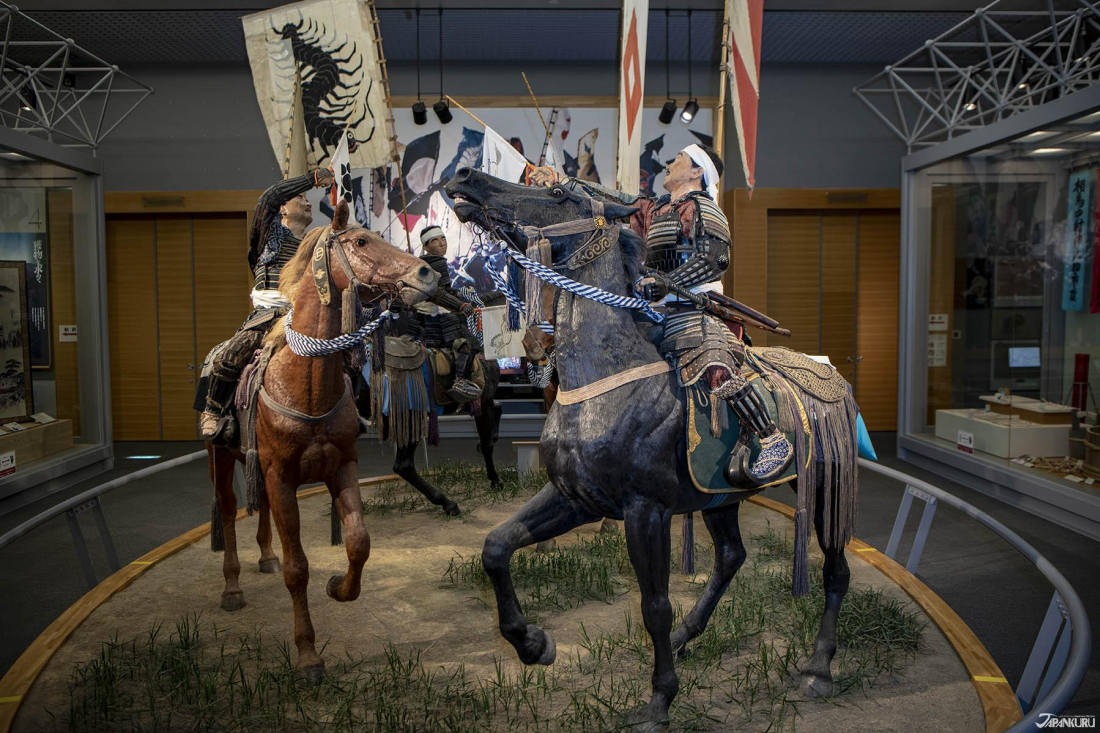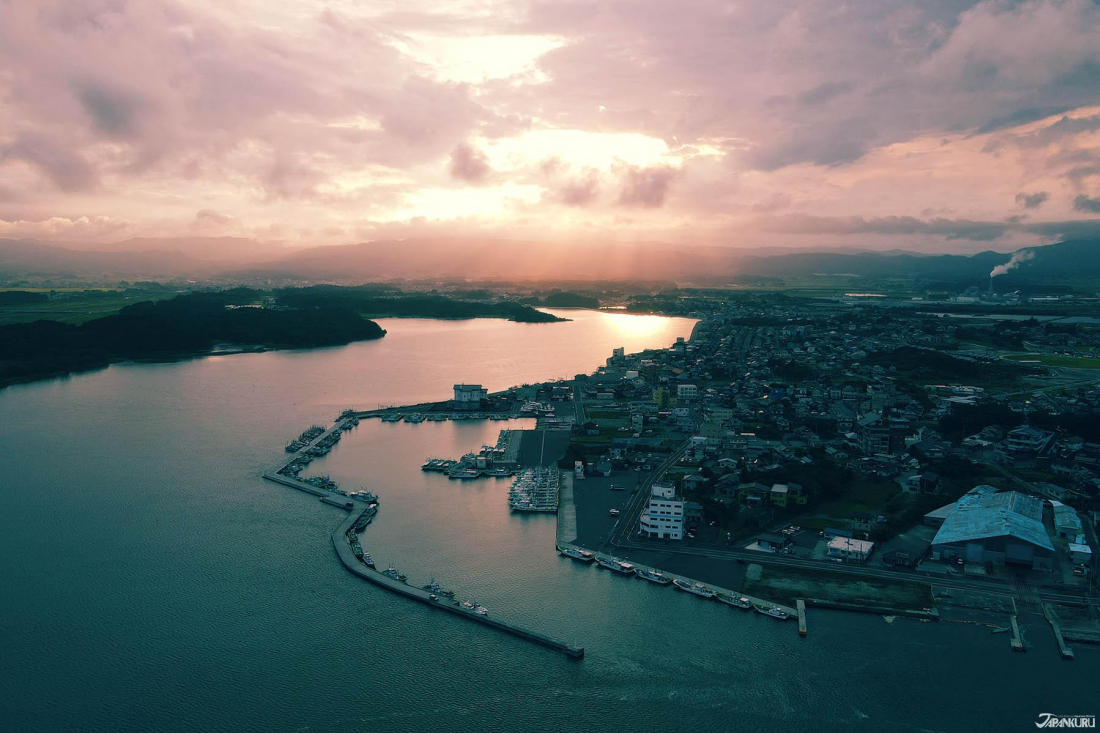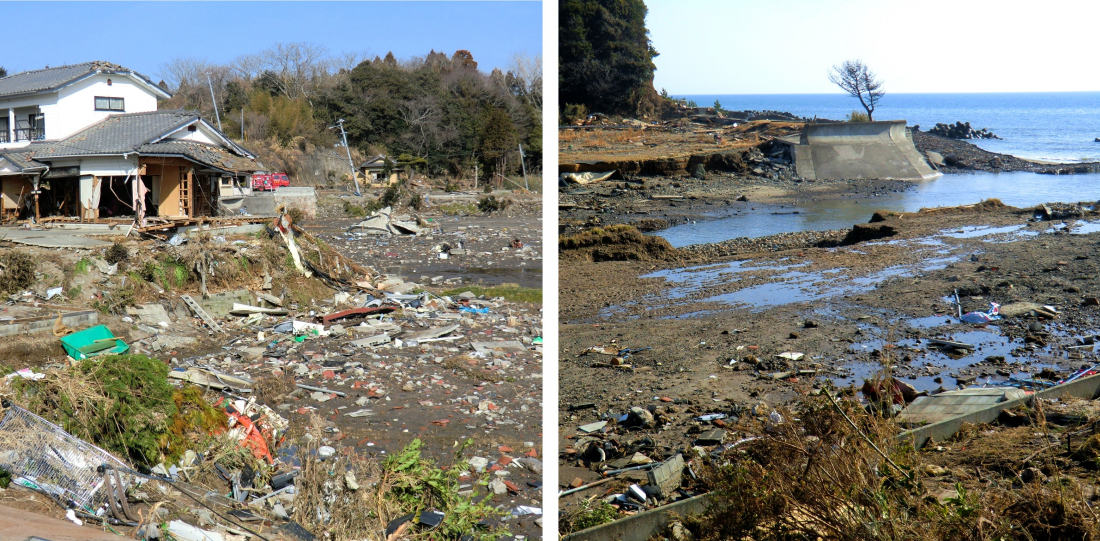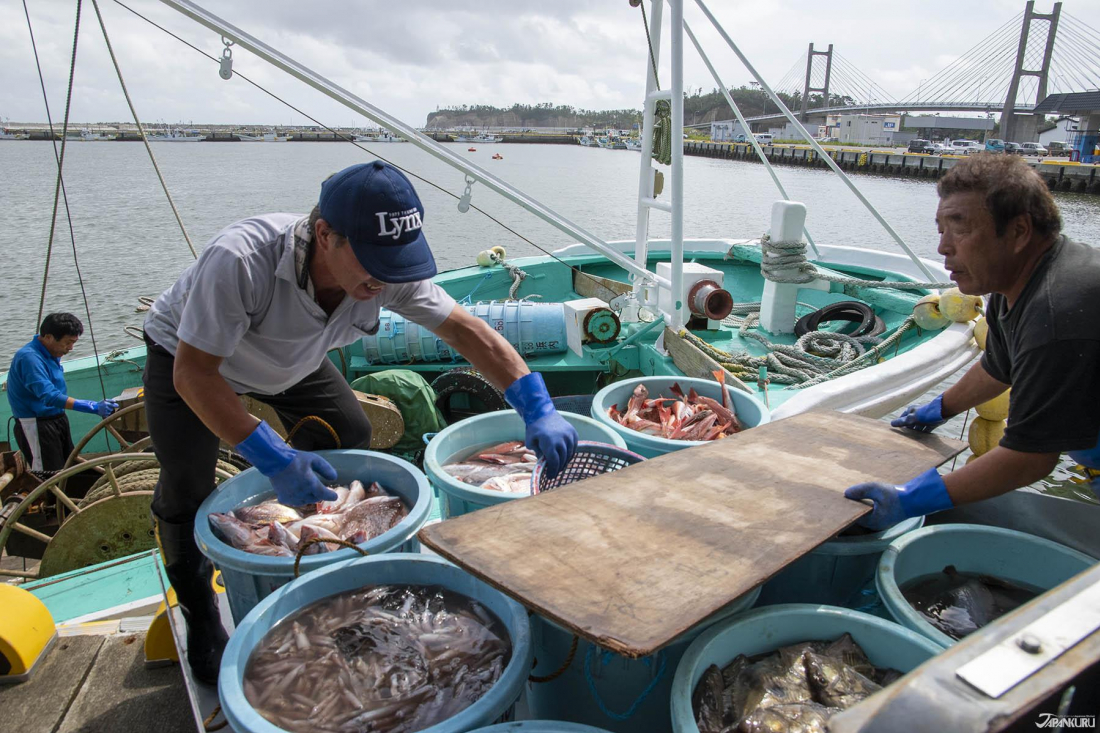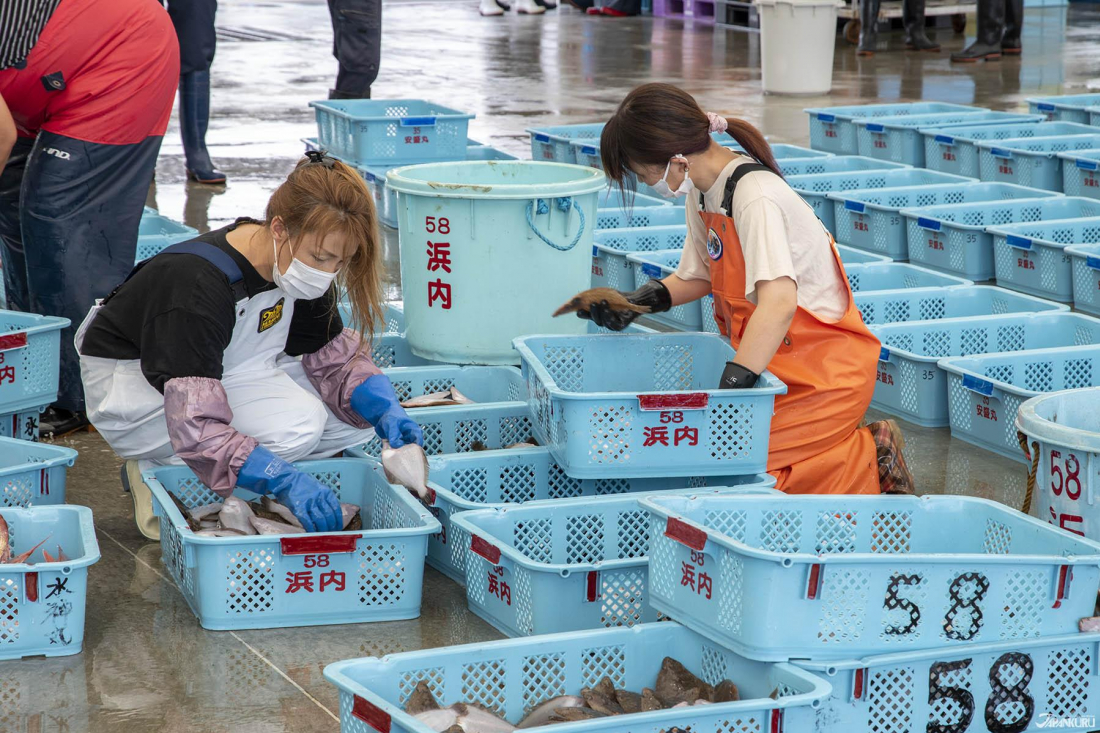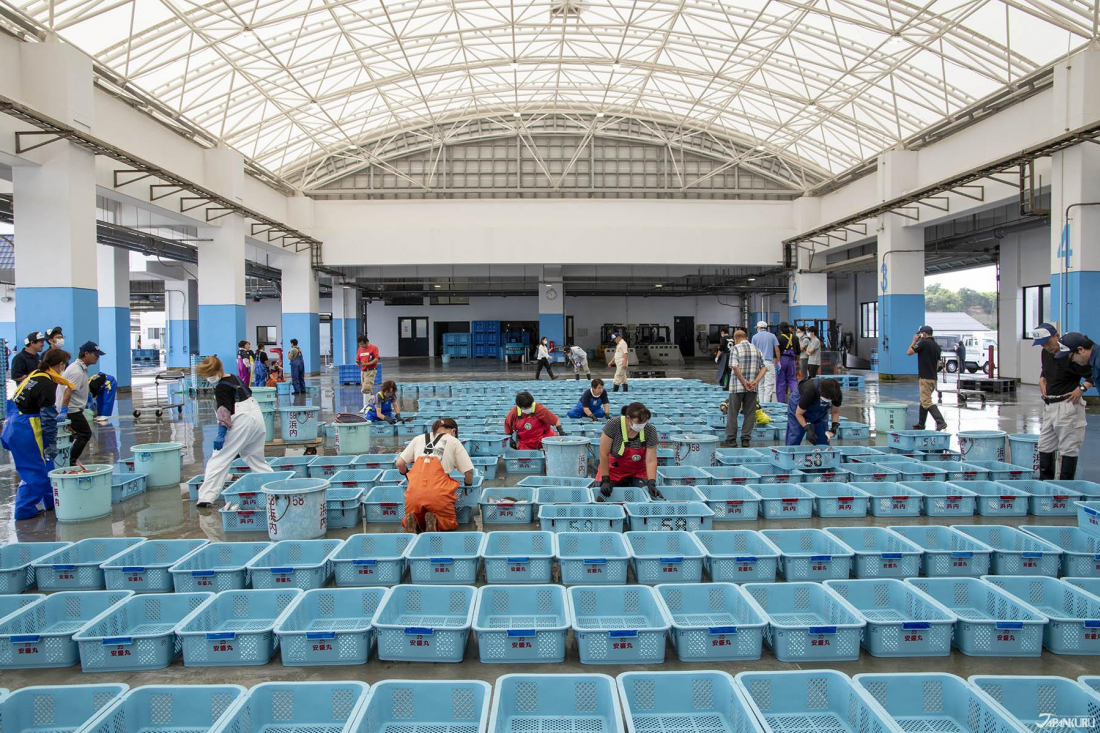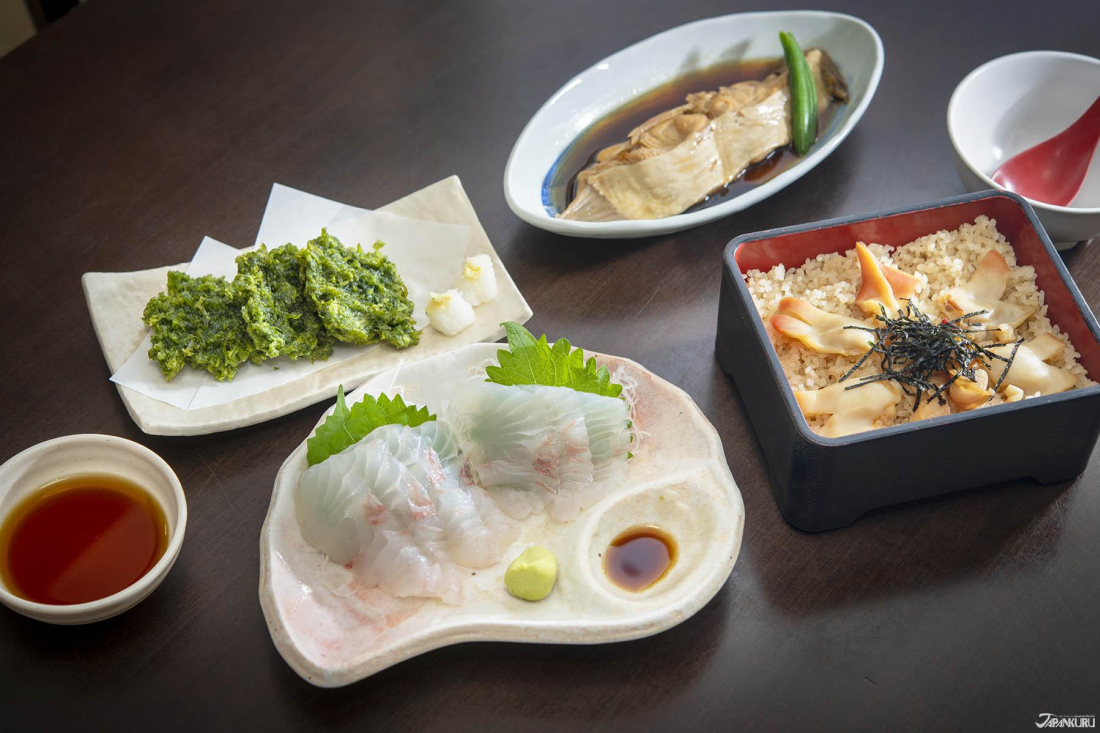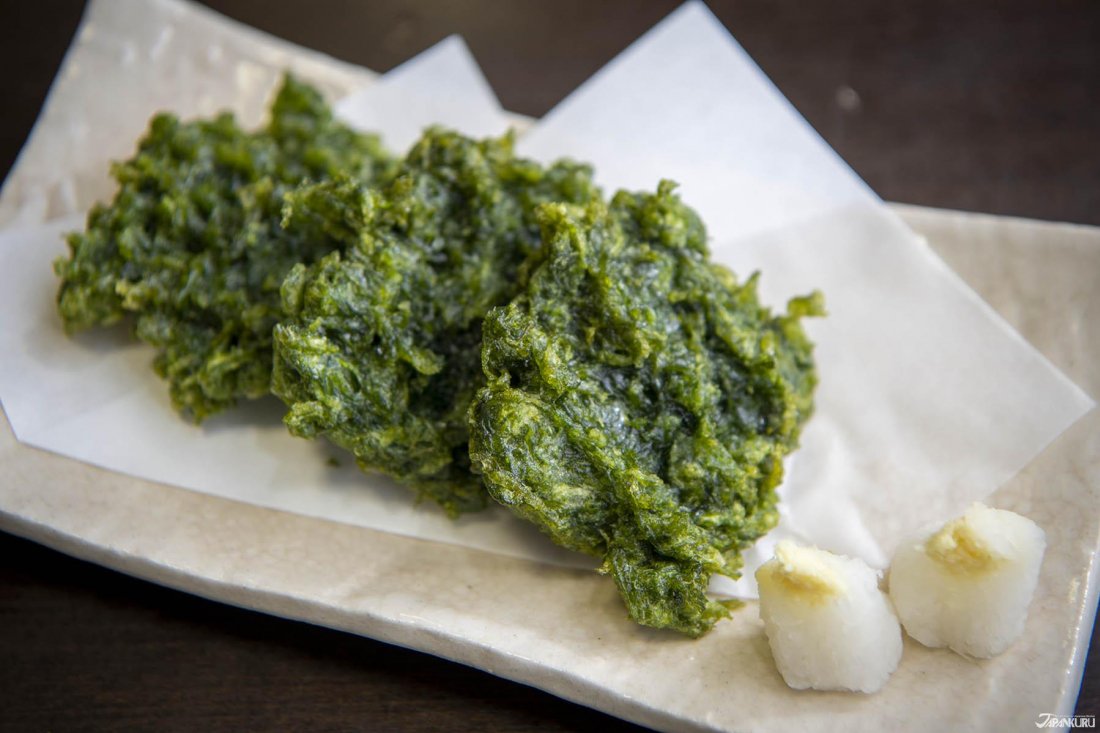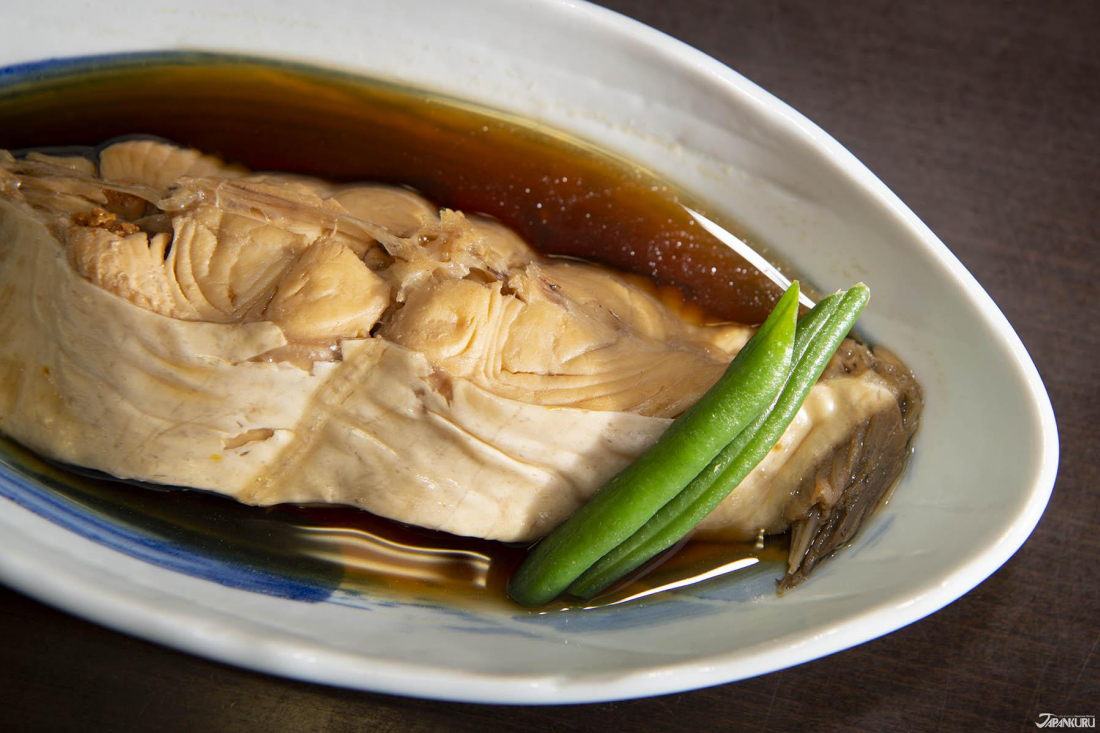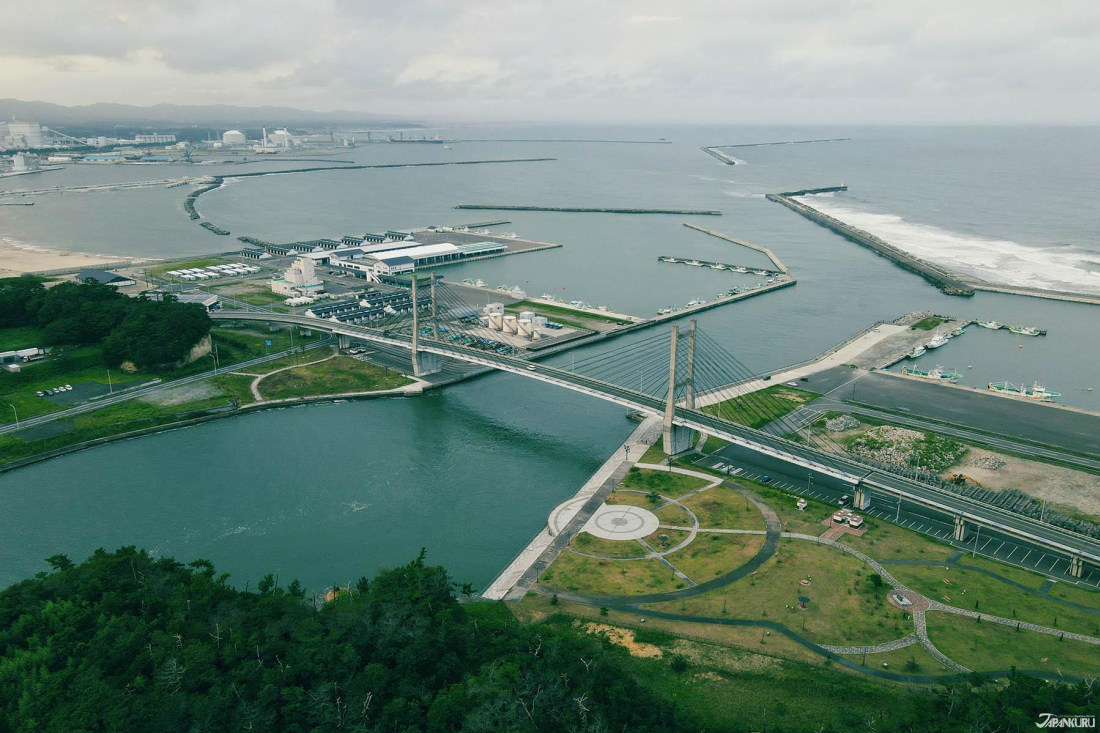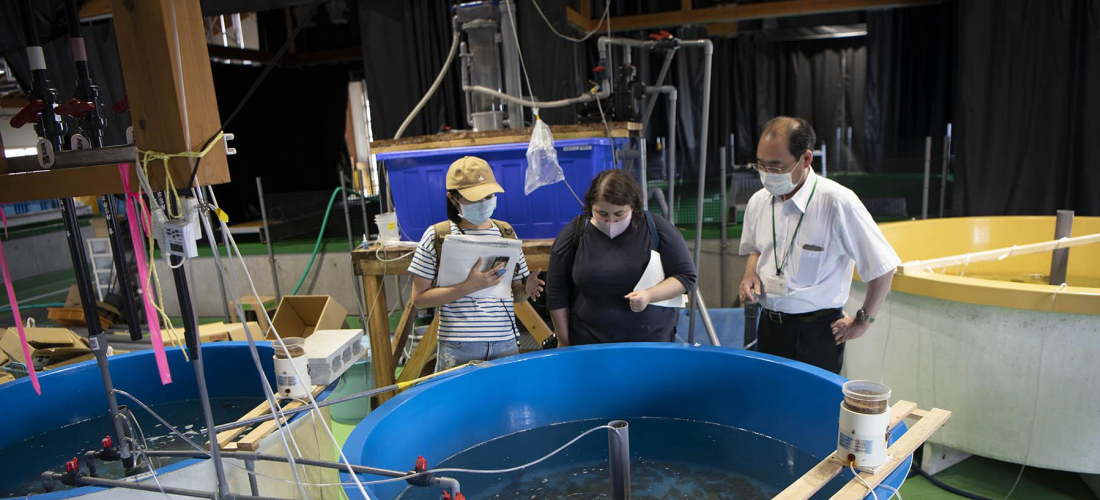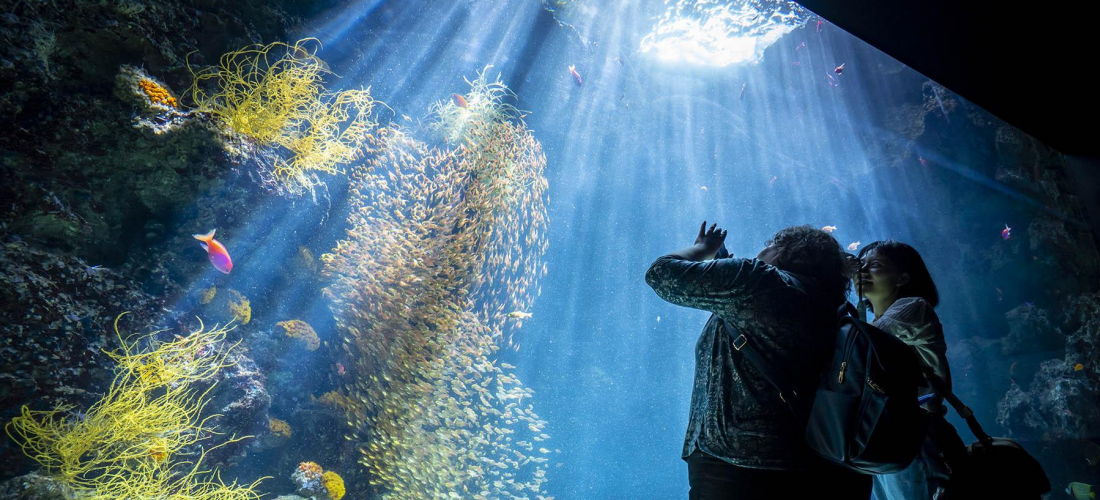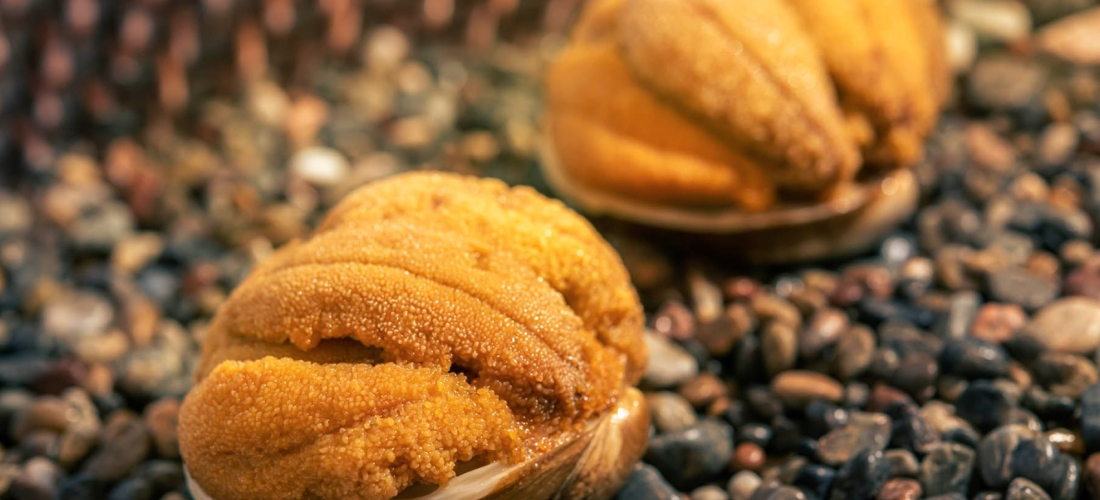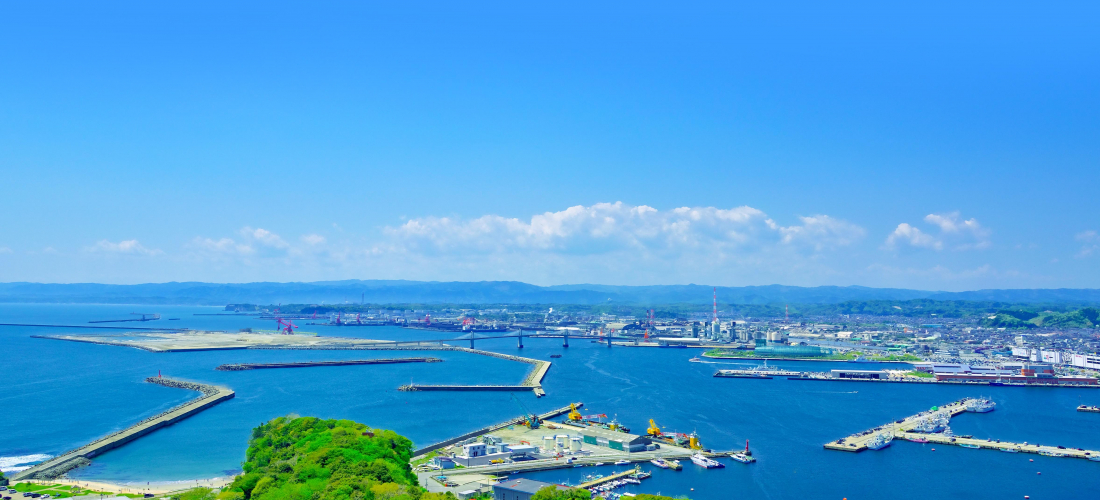
CONTENTS
Soma is a small town of abundant seafood, and iconic (historic) horses, still thriving on the shore of Fukushima’s only lagoon, Matsukawaura.
Soma – A City of Fish and Horses
To anyone familiar with the Soma name, hearing it might bring to mind images of a huge, majestic festival of horses and historic armor, rather than a calm seascape. And while the Soma area has much more to it than one festival, it's certainly a beloved part of the local culture.
This love of horses reaches back to the Soma clan of centuries past, who once ruled over the region, and introduced the Soma Nomaoi festival (相馬野馬追) that continues to this day. Warriors on horseback parade through Soma and corral wild horses, which they present as sacred gifts to Shinto shrines―all a treasured part of local history well-documented in the Minamisoma City Museum, and still in practice. Even now, horses are ubiquitous in Soma, and a good half of the 250 horses that run in the annual festival still live in the area year-round. Despite the city's small size, the Minamisoma Equestrian Park even has one of the largest indoor riding halls in Japan.
However, at any time of the year aside from the few days of the mid-summer Soma Nomaoi festival, visitors to Soma will probably spend more of their time in the area appreciating the city's proximity to the ocean, and all it provides. Off the coast of Soma is Matsukawaura Prefectural Natural Park, which includes the sizeable Matsukawaura Lagoon, a calm body of seawater dotted with uniquely-shaped little islands. It's one of Japan's top 100 scenic views, with strips of land jutting out into the dark blue water. Along the shores, locals and travelers alike look out onto the calm lagoon as they play park golf on seaside courses, or casually cast fishing rods into the waters―just a small hint at the marine life the water is hiding.
Soma’s Fisheries – Markets, Sorting, and Safety Testing
Looking to find out more about Soma's fishing industry, the Japankuru team headed to the wholesale fishmarket and testing facility in Haragama, Soma, to see the fishery business in action. Thanks to the meeting of the Oyashio and Kuroshio ocean currents off of Fukushima's coast, the area is rich with top-notch Joban-mono seafood, and the market regularly sees about 200 different species of fish and other marine life―usually about 30 or 40 different kinds on any average day.
Of course, things have changed along Fukushima's coast during the past decade. The huge earthquake and following tsunami of March 2011 took the lives of many in the area, and the livelihoods of many more. To this day, the name Fukushima brings up concern in other parts of the world, and after hearing reports of radioactive material in the region, many people imagine the whole prefecture as an empty disaster zone. But, as is clear to anyone who actually visits Fukushima's coast these days―or even just looks at the pictures―locals have been hard at work rebuilding, and Soma is once again a thriving community.
Part of the process of the regrowth, especially for agricultural industries, has been constant safety checks. These days, monitoring centers like the Fukushima Agricultural Technology Center regularly analyze the seawater and seafloor off of Fukushima's coast and look for radiation, checking for the safety of both Soma's citizens and the marine life living in the water. On top of that, any kinds of Fukushima Joban-mono fish destined for the market go through thorough safety testing, right at the wholesale market.
The fishing boats that bring their catch to the Hakama facility every morning are divided into small and large boats, but even the largest boats only have crews of five or six people. There are even quite a few solo fishermen who head out in their boats before sunrise, alongside the other fishing boats, to work the lagoon and catch fish in the seas off of Soma's coast. The small crews mean that hauls aren't huge, but the plentiful nature of Joban-mono means that fishers return to land with all kinds of seafood treasures. Bigger boats head out to deeper waters and bring back abundant fish and deeper-dwelling creatures like snow crabs, and smaller boats nimbly navigate closer to shore and pick up surf clams―a local specialty.
Throughout the morning boats return to harbor and deliver their buckets of fish and seafood safely to land, where the catch is sorted by variety and size, ready for wholesale bidders to name their price. Before any sales begin, however, safety checks are the number one priority. Whether the day brings the average 40 different kinds of fish to the marketplace, or double that, every single species is taken for radiation testing each day. Even if only a single fish of some rare variety is caught that day, it goes for testing (we were assured that the fishers were fairly compensated for those rare individual fish, so they wouldn't be taking a big loss). A quick check of Fukushima's publicly available testing logs shows us that radiation levels for any fish currently on the market have been low for years, but when asked what would happen if the testing center did detect unusually high numbers, staff at Haragama were quick to explain: all of that species would be immediately recalled, collected, sent for further testing and research, and kept safely away from the markets. Fortunately, that isn't exactly a common occurrence, and the Japankuru team was able to see the day's catch sold off to eager purchasers, and packed up to become delicious seafood.
While the fisheries of Soma are still operating on a much smaller scale than before the 2011 Tohoku earthquake, the current plan is to ramp things up in the coming years. In the next five years, local fishery associations aim to expand and return to approximately 50% of the business they were doing before the disaster. Plus, they've got a ten-year plan to build new boats and get more fishers out on the water. With a recent influx of younger locals showing renewed interest in Soma's fisheries, it looks like those plans might just work out.
After spending the morning seeing huge buckets of fish and trays of flat flounder being hauled through the market, the Japankuru team was ready to finally give it all a taste, but first we asked Soma Fisheries Cooperative Association President Kanji Tachiya for some advice. Brimming over with enthusiasm for Joban-mono, he had a hard time giving us just one recommendation, saying "What's special about this part of the coast is that there are so many different kinds of fish," and "the flavor of the fish is second to none!" He went on to explain that "the natural shape of the coast and gently sloping seafloor around here is ideal for flounder," and that "the flatfish from the Soma is praised as being some of the best in Japan," but of course, "really any fish caught here is delicious!" Thoroughly encouraged, we went off to enjoy the abundance of Soma's fishing grounds.
Trying Soma’s Joban-mono Fish
Open exclusively for lunch, Takohachi (タコ八) is a go-to spot for locals, and a great place to check out Soma's many delicacies. They even offer seasonal sets made entirely of local specialties, straight from Matsukawaura Lagoon and the surrounding waters. On our visit, we left the day's menu up to the restaurant's chefs, telling them to give us the best of what Soma has to offer, and we were not disappointed.
Front and center was a platter of hirame (ヒラメ, flounder) sashimi, served with Tamasuzu soy sauce, brewed in Fukushima. The pale white and pink flesh was fresh and delicate, so translucent we could see the shiso leaves on the plate underneath. Next, we quickly gobbled up tempura-fried aonori seaweed (青のり, also called green laver), which is grown and harvested right in the Matsukawaura Lagoon, making it a particular specialty of the Soma area. The "hokki-meshi" (ホッキ飯), or surf clam rice, utilizes another ingredient Soma is especially famous for, so the Japankuru team was interested in seeing what Soma's surf clams were really like. The square dish had meaty slices of shellfish arranged carefully on top of flavorful steamed rice, altogether a simple collection of flavors, but a dish we couldn't stop eating. It's no surprise hokki-meshi is a popular part of Soma home cooking. Finally, we finished off the meal with a satisfying slice of righteye flounder, stewed in a savory-sweet broth, leaving the fish tender and deeply flavorful. After polishing off all that local cuisine, we felt like we understood even better why Fukushima's seaside communities were trying to share the freshness and flavor of their seafood with a broader audience.
Looking Towards Soma’s Future
Soma is a city abundant with natural blessings, from the seaweed that grows plentifully in Fukushima's only Matsukawaura lagoon, to the many kinds of Joban-mono marine life thriving in the waters, and the community has plans to show that to the world. The coming years will certainly hold quite a bit of hard work for the city's fishers, and everyone else working in the fishery business, along with a renewed commitment to safety testing and research, but the Japankuru team is looking forward to seeing that work pay off.
For more on the seafood of Fukushima, and more concrete information all about how Fukushima is monitoring the ocean waters and conducting their safety tests, look out for more Joban-mono articles coming soon! And if you'd like more updates and info from Japan, follow us on twitter, instagram, and facebook!
Details
NAME:Soma, Fukushima (福島県相馬市)
PROFILE
Follow us @Japankuru on Facebook, Instagram, and Twitter!
COMMENT
FEATURED MEDIA
VIEW MORE
・Accommodations for Odaiba Sightseers: Mitsui Garden Hotel Toyosu PREMIER ・住宿推薦 三井花園飯店 豐洲普米爾 ・오다이바 관광 맞춤 숙소: 미츠이 가든 호텔 토요스 프리미어 ・ค้างคืนที่ Mitsui Garden Hotel Toyosu Premier โรงแรมสำหรับผู้มาเยือน Odaiba #japankuru #odaiba #tokyo #tokyotrip #japantrip #japantravel #mitsuigardenhotel #mitsuigardenhoteltoyosupremier #tokyohotel #odaibahotel #toyosu #tokyoview #tokyobay #rainbowbridge #미츠이가든호텔토요스프리미어 #오다이바 #오다이바맛집 #오다이바건담 #오다이바해변공원 #오다이바야경 #오다이바온천

Nagano Prefecture is famous for delicious soba noodles, and in the city of Ueda, you can learn from the experts! Local aunties run this cooking class, teaching you everything you need to know to make your own delicious plate of soba noodles entirely from scratch. #japankuru #soba #sobanoodles #japanesefood #travelexperience #japan #japantrip #ueda #nagano #japaneseculture #japanexperience #daytrip #daytour #cookingclass #japanesecookingclass #上田市 #そば作り #소바체험 #우에다시 #나가노여행 #일본소바

Kuramae Shrine is known for its early-blooming cherry blossoms and its gorgeous golden mimosa blooms, making it a great sakura spot for travelers arriving in Tokyo a little early for the main cherry blossom season. It’s also tucked away in a neighborhood packed with trendy cafes and coffee shops. Kuramae is a lovely place to spend the day. 🌸☕️ ・ #japankuru #kuramaeshrine #kuramae #tokyo #tokyotrip #cherryblossom #cherryblossoms #mimosa #tokyocherry #花見 #蔵前神社 #ミモザ #桜 #東京 #Japan #日本 #일본 #Japon #ญี่ปุ่น #Japão #Japón #япония #japantravel #日本旅行 #日本旅遊 #일본여행 #japan_of_insta #japantrip #traveljapan

Local Japanese Favorites at the Okinawa Don Quijote ② Ohta’s Isan, the digestive aid of the Japanese people ・ ・ 2024唐吉訶德不可不知的好物推薦② 日本國民消化小幫手:太田胃散 ・ ・ 오키나와 돈키호테 숨은 꿀템2. 일본 국민 소화제! 오타이산 #japankuru #okinawa #donki #沖縄 #오키나와 #오키나와여행 #오키나와돈키호테 #일본쇼핑리스트 #오타이산 #일본소화제 #太田胃酸 #ohtasisan

Happy Valentine's Day from the Japankuru team! May your day be full of sweet chocolates and sweet nothings. 💕 Or, if you're like a rising number of women in Japan, take the opportunity to treat yourself! 🍫💝💆 • Find out more at Japankuru.com! (Link in bio.) • #japankuru #valentinesday #valentineschocolate #japanesechocolate #japaneseculture #バレンタイン #バレンタインチョコ #メリーチョコレート #Japan #日本 #일본 #Japon #ญี่ปุ่น #Japão #япония #japantravel #日本旅行 #日本旅遊 #일본여행 #japan_of_insta #japantrip #traveljapan #japan🇯🇵 #japanlife #igerstokyo #explorejapan #japanfocus #enjoyjapan #japantravelphoto

Japankuru Coupon: BEAMS fashion, accessories, lifestyle goods, and more! BEAMS 5% Discount Coupon ▶︎ Validity Dates: February 1 ~ February 29, 2024 ▶︎ Discount: 5% off all products in-store ▶︎ Usable At: BEAMS stores throughout Japan (all stores except BEAMS JAPAN Izumo and BEAMS JAPAN Nikko) ▶︎ Details: Please present this coupon page before payment to receive your discount! This coupon is also valid in combination with tax-free discounts/refunds for foreign tourists. (Tax-free shopping is only available at some BEAMS locations.) Some products may not be eligible for discount. ・ ・ ・ BEAMS - JAPANKURU優惠折扣券 BEAMS 2024年2月限定特別優惠券 店內全部商品95折 ▶︎使用期間:2024/2/1到2024/2/29 ▶︎使用範圍:日本全國店舖 ▶︎使用方法:結帳時請務必事先向店員出示本優惠券,若未出示本優惠券恕無法享有本優惠。本優惠券可搭配免稅優惠一併使用,但不排除特定門市無法使用本優惠券。此外,不排除特定商品不適用本優惠券。 ・ ・ ・ 「빔즈(BEAMS) x 재팬쿠루(JAPANKURU)」스페셜 할인 쿠폰 빔즈(BEAMS) 5% 할인 쿠폰 ▶유효기간: 2024년 2월 1일 ~ 2월 29일(한 달 동안) ▶︎할인율: 매장 내 전 상품 “5% 할인" ▶︎해당 매장: 일본 전국 빔즈 (BEAMS) 매장 (BEAMS JAPAN이즈모、BEAMS JAPAN닛코는 쿠폰 할인 대상 제외 점포입니다) ▶︎상세 내용: 결제 전 본 쿠폰 페이지를 제시하면 정가대비 5% 할인된 금액에 구매하실 수 있습니다! 본 쿠폰은 외국인 관광객들을 대상으로 하고 있으므로 면세 혜택(빔즈 일부 매장)과 별도로 추가 할인이 가능합니다. (일부 매장 및 제품은 대상에서 제외될 수 있습니다.) #japankuru #beams #beamsjapan #beamsginza #coupon #재팬쿠루 #빔즈재팬 #빔즈 #일본여행 #일본쇼핑 #일본쇼핑리스트 #銀座 #東京 #tokyoshopping #japankurucoupon

